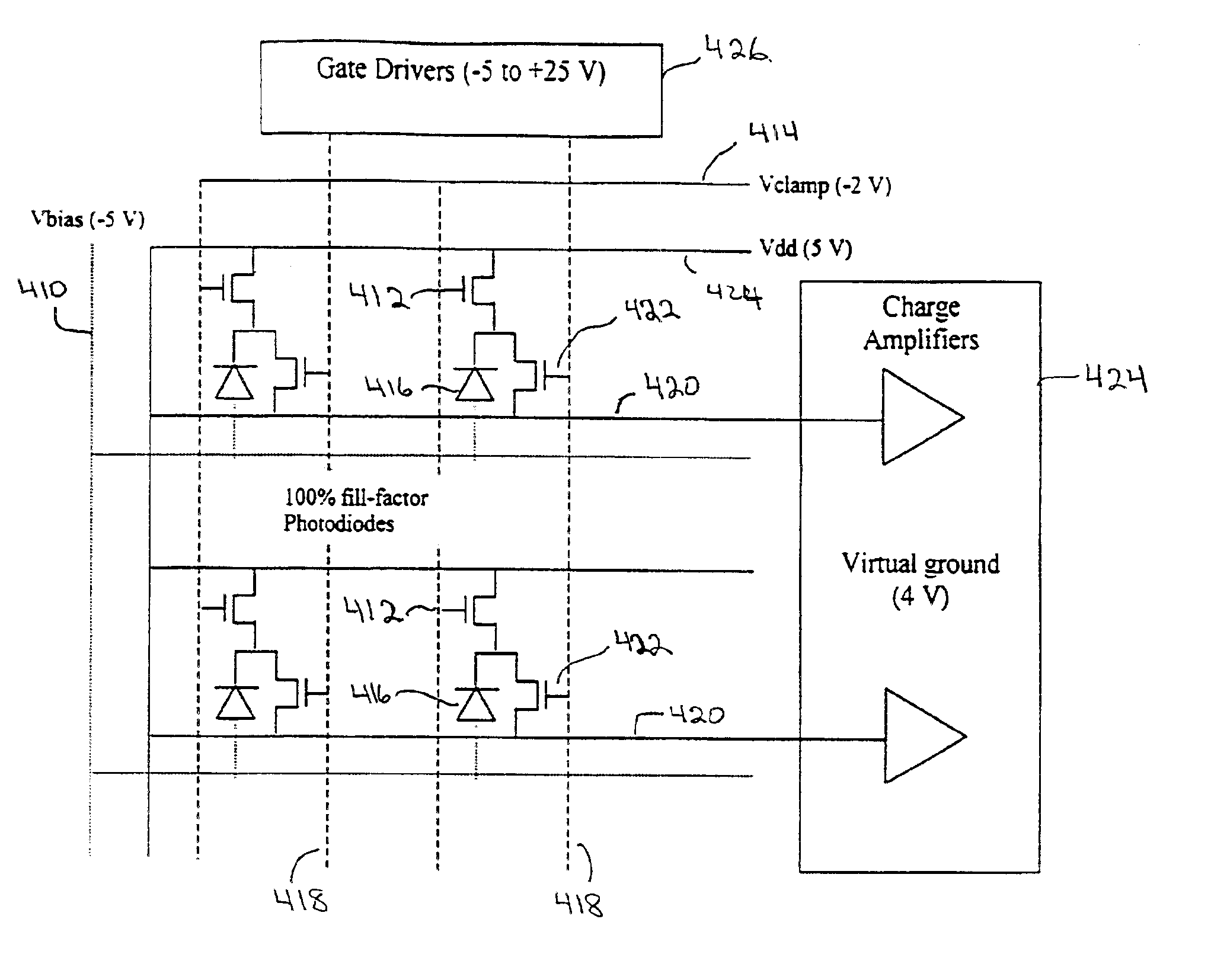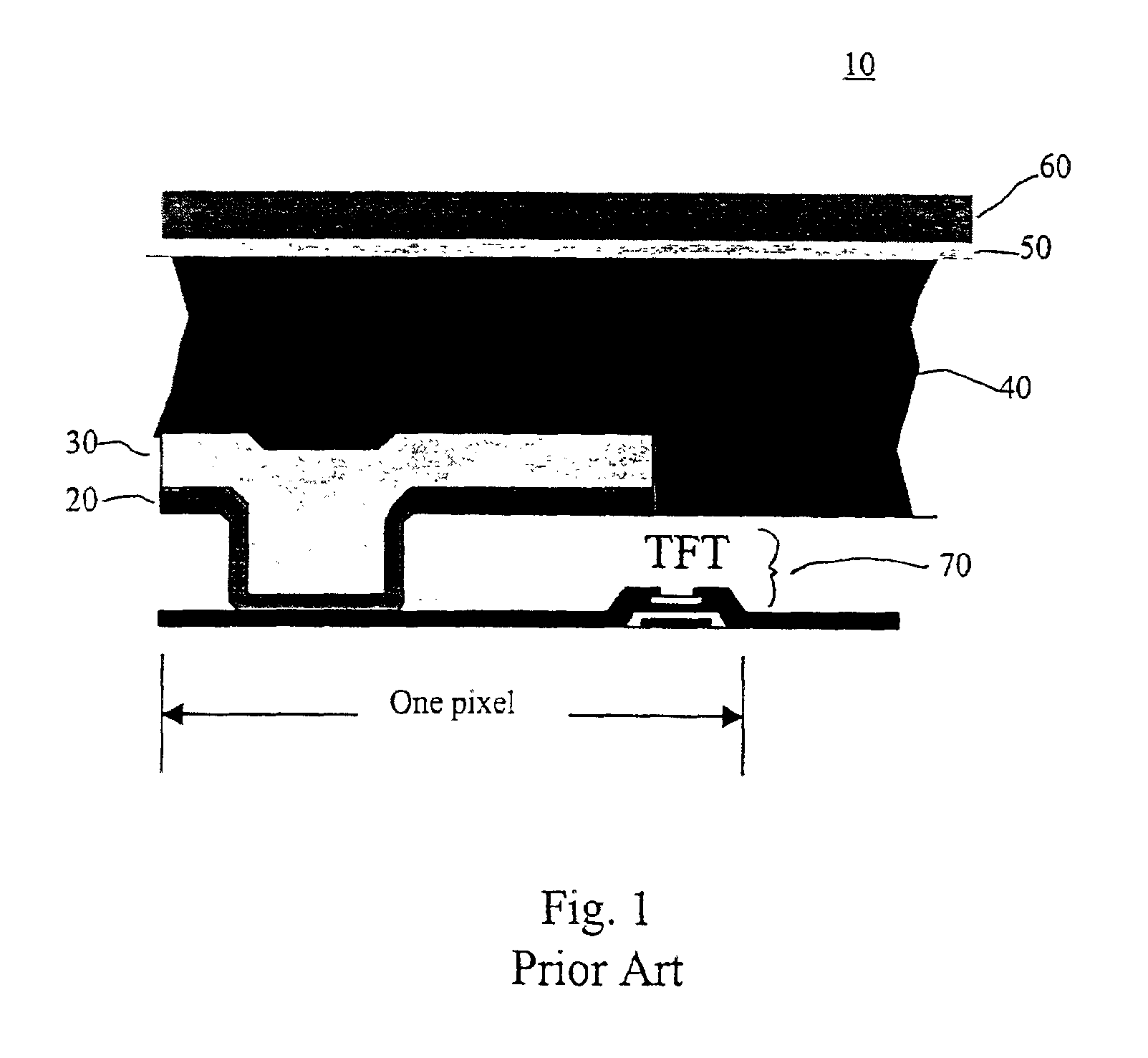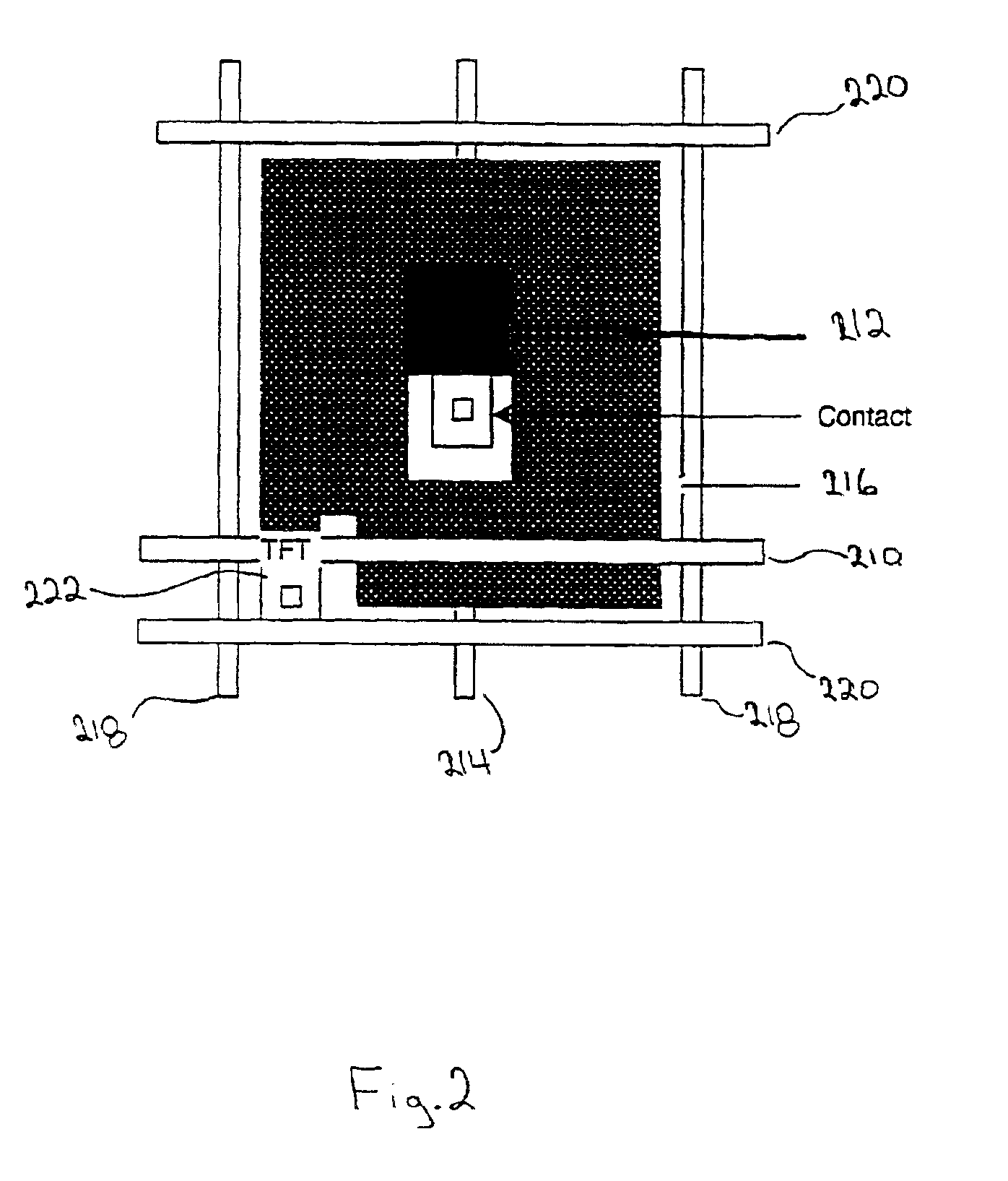Device and method for reducing lag and blooming in amorphous silicon sensor arrays
a technology of amorphous silicon and image array, applied in the field of amorphous silicon image array, can solve the problems of ghost image that remains for several tens of seconds, increased diode capacitance and pixel noise, and image lag in full fill factor image arrays, etc., to achieve the effect of reducing lag and blooming
- Summary
- Abstract
- Description
- Claims
- Application Information
AI Technical Summary
Benefits of technology
Problems solved by technology
Method used
Image
Examples
Embodiment Construction
Reference will now be made in detail to the preferred embodiments of the invention, examples of which are illustrated in the accompanying drawings.
FIG. 2 shows a pixel layout of an image array including a clamping diode consistent with one embodiment of the invention. In addition to the conventional data lines 220, gate lines 218, TFT 222, and photodiode 216, the pixel of the invention includes a common bias line 210 and clamp line 214 running between each gate 218 and data line 220. It also includes a clamping diode 212 connected between the drain line and the pixel storage node.
The clamping diode 212 reduces image lag by preventing the voltage across the photodiode 216 from dropping below a specific threshold. Thus, even when the photodiode 216 is subject to illumination that would normally saturate the pixel, the photodiode remains under reverse bias.
FIG. 3 depicts the pixel circuit consistent with one embodiment of the present invention. The pixel circuit includes a gate line 31...
PUM
 Login to View More
Login to View More Abstract
Description
Claims
Application Information
 Login to View More
Login to View More - R&D
- Intellectual Property
- Life Sciences
- Materials
- Tech Scout
- Unparalleled Data Quality
- Higher Quality Content
- 60% Fewer Hallucinations
Browse by: Latest US Patents, China's latest patents, Technical Efficacy Thesaurus, Application Domain, Technology Topic, Popular Technical Reports.
© 2025 PatSnap. All rights reserved.Legal|Privacy policy|Modern Slavery Act Transparency Statement|Sitemap|About US| Contact US: help@patsnap.com



